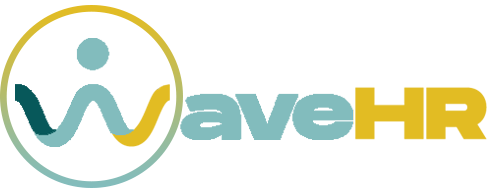Bringing human connection back to management
When communication at work consists mostly of Slack messages, video chats, and emails, it can be difficult for managers to generate connections with their employees. But, creating genuine human connections within the employee-manager relationship is vital to the success of your organization.
Strategies and program ideas to help managers build stronger relationships.
1. Invest in manager training.
To build stronger relationships with employees, managers have to understand what’s expected of them and develop the skills to deliver on those expectations. One of the best ways to achieve this alignment is through manager training. Below are examples of manager training programs our panelists have introduced within their organizations:
BizLibrary Bootcamp.
At BizLibrary, everybody – from C-suite leaders to managers – goes through a mandatory management training boot camp. This boot camp provides a deep-dive onboarding experience to ensure every leader understands the company’s core values, success traits, and management culture. BizLibrary also supplements this boot camp with ongoing training to help managers develop the skills that align with the company’s expectations, such as active listening, coordinating with others, problem-solving, and general business acumen.
Best-Self Academy.
15Five uses a management methodology called Best-Self Management that’s based on the science of human thriving and designed to meet the needs of an evolving workforce. This methodology is based on three pillars:
- Being and Becoming your Best-Self
- Cultivating Relational Mastery
- Creating a Powerful Share Context
Using these pillars, the team at 15Five developed content using research from the world’s top universities in areas like motivation, performance, organizational dynamics and positive psychology. All of 15Five’s managers have access to this content through Best-Self Academy to help them build stronger relationships with their employees.
2. Make the most of 1:1 meetings.
1:1 meetings are one of the most important opportunities for connection that managers can have with their direct reports. This is time that can be used to clarify and prioritize goals, unblock the team, recognize accomplishments, and share feedback. Unfortunately, many managers treat 1:1s as a status update meeting and fail to focus on creating more profound connections. Our panelists have a few suggestions to ensure 1:1 meetings are highly effective for both managers and employees:
Best-Self Kickoff.
The team at 15Five uses a series of structured questions called Best-Self Kickoff that can be introduced to a new team member and their manager during new-hire onboarding. The purpose of these questions is to deepen and accelerate the relationship-building process between managers and employees by anywhere from six to 18 months! Our panelists had a few additional tips when it comes to helping managers uplevel their 1:1s.
- Establish trust. The way that you start 1:1s is critical. Before digging into business, encourage managers to start the meeting with a question like “how’s life?” Or “how are you feeling today?” With so much going on in the world, using “today” specifically helps employees to dial in on present feelings or challenges. This allows managers to connect, establish trust, and demonstrate personal caring.
- Take preferences into account. It’s also important for managers to have explicit conversations with their people about what works best for them concerning 1:1s. For example, does your employee want to do all their 1:1s via Zoom? Or do they prefer to chat on the phone? If a manager can take a minute to take these preferences into account, it allows employees to be who they are. Shannon shared that, especially during the pandemic, it’s important to create diverse spaces where employees feel safe and vulnerable – instead of taking all of your meetings on Zoom, experiment with taking a walk and talk on your phone (to increase movement and fluid thinking) or encourage a culture where you can be comfortable turning cameras off.
3. Approach employee recognition intentionally.
Recognition is one of the most powerful ways for leaders to connect with their employees. Manager-driven recognition is especially powerful, so employees feel both seen and valued for all the hard work they’re doing behind the scenes. Research has found that favorable treatment from a manager is synonymous with support from the organization. When employees feel appreciated by their company, their motivation to continue receiving employee rewards and their level of job performance increase accordingly.
How we recognize our team at Blueboard.
At Blueboard, we spend a lot of time thinking about the how and why of recognition. Without addressing these two questions, recognition won’t have the impact that you want.
Here are a few best practices for your managers to keep in mind when recognizing employees.
- Authenticity deepens relationships.
Giving genuine recognition is an opportunity to share and demonstrate what is important. Being authentic and honest is also a signal of personal values and builds confidence and trust in the manager-employee relationship.
- Specificity ensures a shared understanding.
Giving precise, detailed feedback to employees about why they’re being recognized ensures that everyone is working toward the same goals. Sharing purpose is also a great way to feel connected.
- Personalization adds meaning and builds connection.
Knowing how and when your employees like to be recognized shows that you care about them and their needs. Giving an employee a reward that aligns with their interests and passions can be an opportunity to build your relationship through a shared experience.
- Values-based recognition reinforces culture.
You don’t have to wait for an employee to achieve an annual goal to recognize them! Spotting the smaller wins and behaviors that bring your company values to life is a great area for recognition, which reinforces your overall commitment to values.
If planning a spot recognition program for rewarding culture champions who are living your company values, grab a copy of our free employee recognition planning guide:

4. Create space for feedback.
Encouraging employees to share feedback with managers is an effective way to ensure that their needs are being met. Of course, this isn’t an easy ask. Most employees feel awkward or uncomfortable with the idea of giving feedback to their managers. Here’s how some of our panelists overcome this obstacle:
Stop/Start/Continue Model.
At BizLibrary, they’ve established a culture of managing up. This means that their managers are trained to continuously ask for feedback from employees, while employees are coached to feel psychologically safe giving that feedback. One of the ways that BizLibrary makes it easier for employees to give feedback is to have their managers utilize the Stop/Start/Continue model.
This is essentially a series of questions that managers can ask employees: What should I stop doing? What should I start doing? What should I continue doing? This creates a more structured format for employees to provide feedback. Our panelists had additional suggestions when it comes to feedback:
- Triangulate feedback. While it’s incredibly valuable to have employees give their managers feedback, the burden shouldn’t be solely on them. Instead, equip your managers with various ways to receive feedback – whether that’s in the form of an engagement survey or a team conversation.
- Provide tools. As we mentioned before, training is a critical aspect of preparing managers to build deeper relationships. But in addition to the training, managers also need tools. This is what will take their training from a one-time experience to something that’s ongoing. Tools also allow for normalization of feedback by making it something that’s prompted regularly.
- Clarify the purpose of feedback. Finally, it may be easier for managers to ask for feedback if they understand that it’s data and not a directive. In other words, the purpose of asking for feedback is to gather information and take action on whatever feels right to the manager – not to blindly follow everything that the employee is asking for. This can make asking for feedback feel a little bit less intimidating for managers.
Bring human connection back into your company.
Working remotely doesn’t mean we have to sacrifice human connection. Use the strategies and programs our panelists shared as inspiration to deepen relationships within your organization.
If you’re curious to learn how Blueboard’s experiential rewards platform can help your managers foster more meaningful relationships with employees, request a personalized demo online here.


